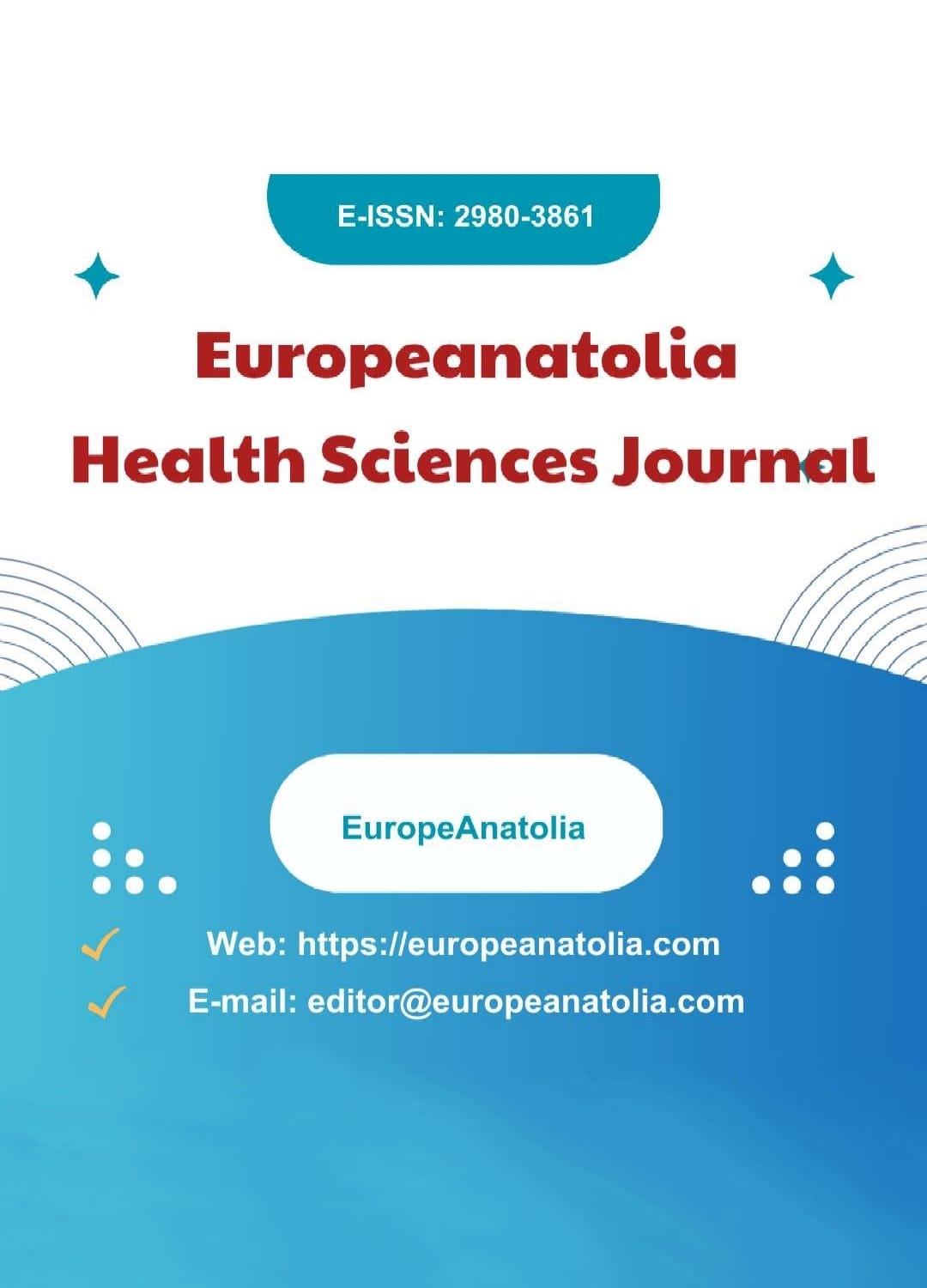Single Center Experience in Comparison of Crystalized Phenol and Surgical Excision in The Treatment of Pilonidal Sinus Disease
Research Article
DOI:
https://doi.org/10.5281/zenodo.13996345Keywords:
crystallized phenol, pilonidal sinus, limbergAbstract
Introduction: Pilonidal sinus is a common disease of the sacrococcygeal region, usually seen in young men. In the treatment of this disease, there are minimally invasive methods as well as classical excisional surgical methods.
Objective: The aim of this study is to compare the postoperative morbidity and complications of conventional excision and flap closure versus curettage and crystallized phenol(CP), in the treatment of pilonidal sinus disease(PS), and to evaluate the effectiveness of crystallized phenol application in the treatment of PS.
Method: Medical records of patients who underwent sinus excision due to PS and patients who underwent crystallized phenol application for PS between January 2018 and December 2022 in our clinic were retrospectively evaluated. Two groups were formed by including patients who underwent PS excision with flap closure (e.g. Limberg, Karidakis) and patients who underwent curettage of the sinus area followed by CP application. Patients with unknown previous surgical history and those who could not be followed up postoperatively were not included in the study. A total of 240 patients in the excision group and 93 patients in the CP group were included in the study. Data regarding age at the time of surgery, gender, number of sinus orifices, history of abscess drainage, history of previous surgeries, recurrence after surgery, reoperation, wound site infection, and length of hospital stay were obtained for all patients.
Results: There was no significant difference in demographic characteristics between the two groups (p>0.05). Patients treated with CP had a lower number of sinus orifices compared to the excision group. The history of abscess drainage was significantly higher in the CP group (p<0.05). There was no statistically significant difference between the two groups regarding previous surgeries (p>0.05). Recurrence and the need for reoperation were significantly lower in the CP group (p<0.05). Patients in the CP group had lower surgical site infections after the procedure compared to the excision group(p<0.05).
Conclusion: Data from our analysis indicates that a minimally invasive approach for the treatment of PS is suitable for appropriate patients. This method is also associated with shorter hospital stay, lower recurrence and reoperation rates, and lower surgical site infection rates. Notably, previous sinus surgery and drainage do not preclude this method.
References
Bayhan Z, Zeren S, Duzgun SA, Ucar BI, Alparslan Yumun HN, Mestan M. Crystallized phenol application and modified Limberg flap procedure in treatment of pilonidal sinus disease: A comparative retrospective study. Asian J Surg. 2016;39(3):172-7. doi: 10.1016/j.asjsur.2015.12.007.
Iesalnieks I, Ommer A. The Management of Pilonidal Sinus. Dtsch Arztebl Int. 2019 7;116(1-2):12-21. doi: 10.3238/arztebl.2019.0012.
Dogru O, Kargin S, Turan E, Kerimoğlu RS, Nazik EE, Ates D. Long-term outcomes of crystallized phenol application for the treatment of pilonidal sinus disease. J Dermatolog Treat. 2022;33(3):1383-1390. doi: 10.1080/09546634.2020.1818676.
Harlak A, Menteş Ö, Kilic S, Coskun K, Duman A, Yılmaz F. Sacrococygeal pilonidal disease: analysis o previously proposed risk factors. Clinics. 2010; 65(2) :125-31.
Soll C, Dindo D, Steinemann D, Hauffe T, Clavien PA, Hahnloser D: Sinusectomy for primary pilonidal sinus: less is more. Surgery 2012; 150: 996–1001.
Karydakis GE: New approach to the problem of pilonidal sinus. Lancet. 1973; 2: 1414–5.
Cihan A, Ucan BH, Comert M, Cesur A, Cakmak GK, Tascilar O. Superiority of asymmetric modified Limberg flap for surgical treatment of pilonidal disease. Dis Colon Rectum. 2006; 49: 244–9.
Akan K, Tihan D, Duman U, Ozgun Y, Erol F, Polat M. Comparison of surgical Limberg flap technique and crystallized phenol application in the treatment of pilonidal sinus disease: a retrospective study. Ulus Cerrahi Derg. 2013;29:162e166.
Tazeoglu D, Dag A. Effect of treatment of pilonidal sinus with phenol on patients' clinical condition and quality of life. Ann Ital Chir. 2022;93:385-390.
Akkurt G, Ataş H. Comparison of Crystallized Phenol Application and the Karydakis Flap Technique in the Treatment of Sacrococcygeally Localized Pilonidal Sinus Disease. Cureus. 2021;13(5):e15030. doi: 10.7759/cureus.15030.
Sozuer EM, Topal U, Dal F, Akyuz M, Talih T. Application of crystal-linephenol in pilonidal sinus disease A single-center and single-surgeon experience. Ann Ital Chir. 2020;91:520-525.
Kargın S, Doğru O, Turan E, Kerimoğlu RS, Nazik EE, Esen E. Previouslyoperatedrecurrentpilonidalsinustreatedwithcrystallizedphenol: Twenty-year experience in a cohort study. Turk J Surg. 2022;38(2):187-195. doi: 10.47717/turkjsurg.2022.5247.
Şengül S, Güler Y, Çalış H, Kubat M, Karabulut Z. Crystallized phenol treatment vs excision and primary closure in pilonidal sinus disease: A randomized clinical trial in adolescent patients. J Pediatr Surg. 2022;57(3):513-517. doi: 10.1016/j.jpedsurg.2021.03.004.
Gozukucuk A, Cakiroglu B, Yapici S, Cesur IB, Ozcelik Z, Kilic HH. Comparing Crystallized Phenol and Surgical Excision Treatments in Pilonidal Sinus Disease. J Coll Physicians Surg Pak. 2022;32(5):652-657. doi: 10.29271/jcpsp.2022.05.652.
Downloads
Published
How to Cite
Issue
Section
License
Copyright (c) 2024 Europeanatolia Health Sciences Journal

This work is licensed under a Creative Commons Attribution 4.0 International License.











